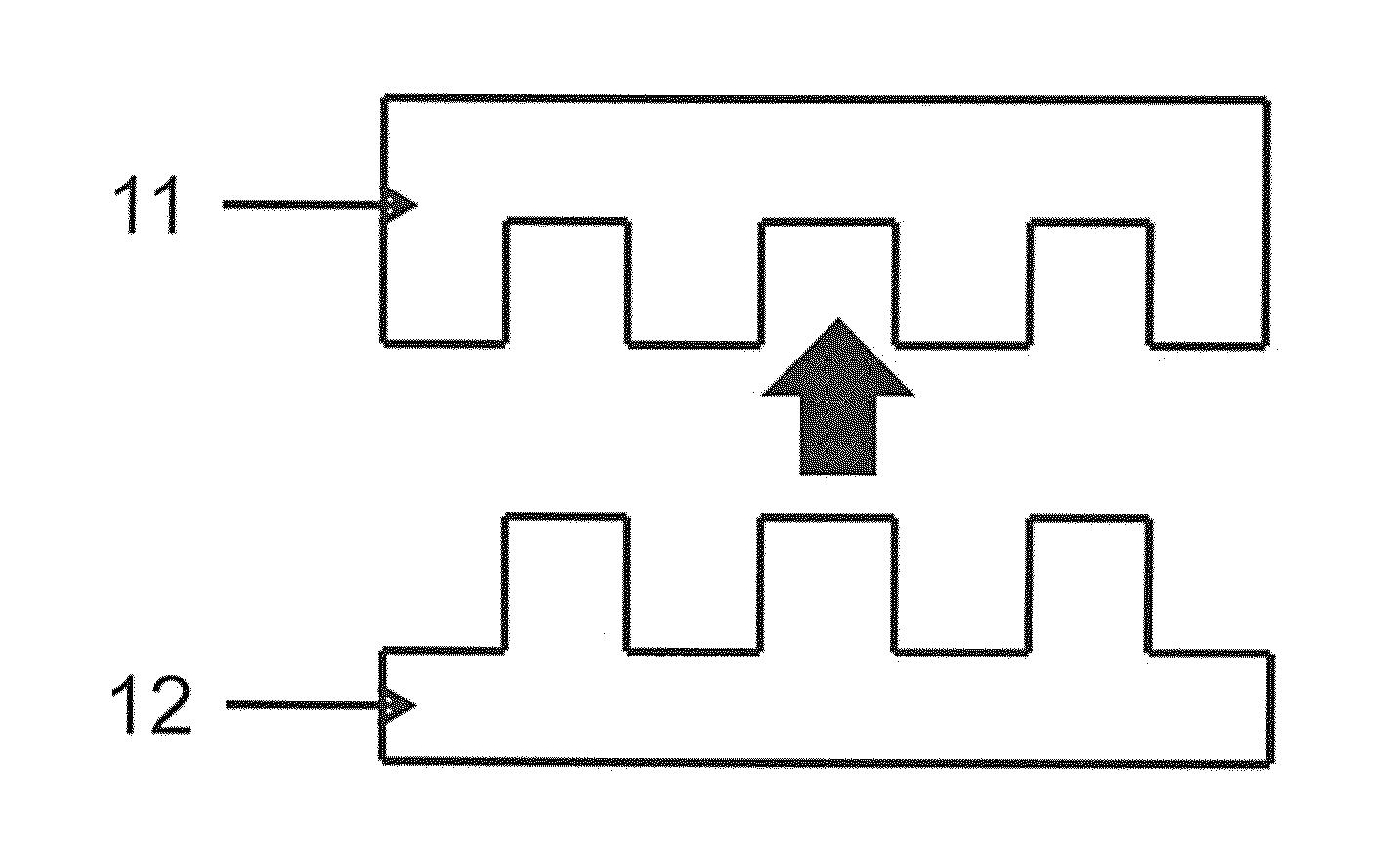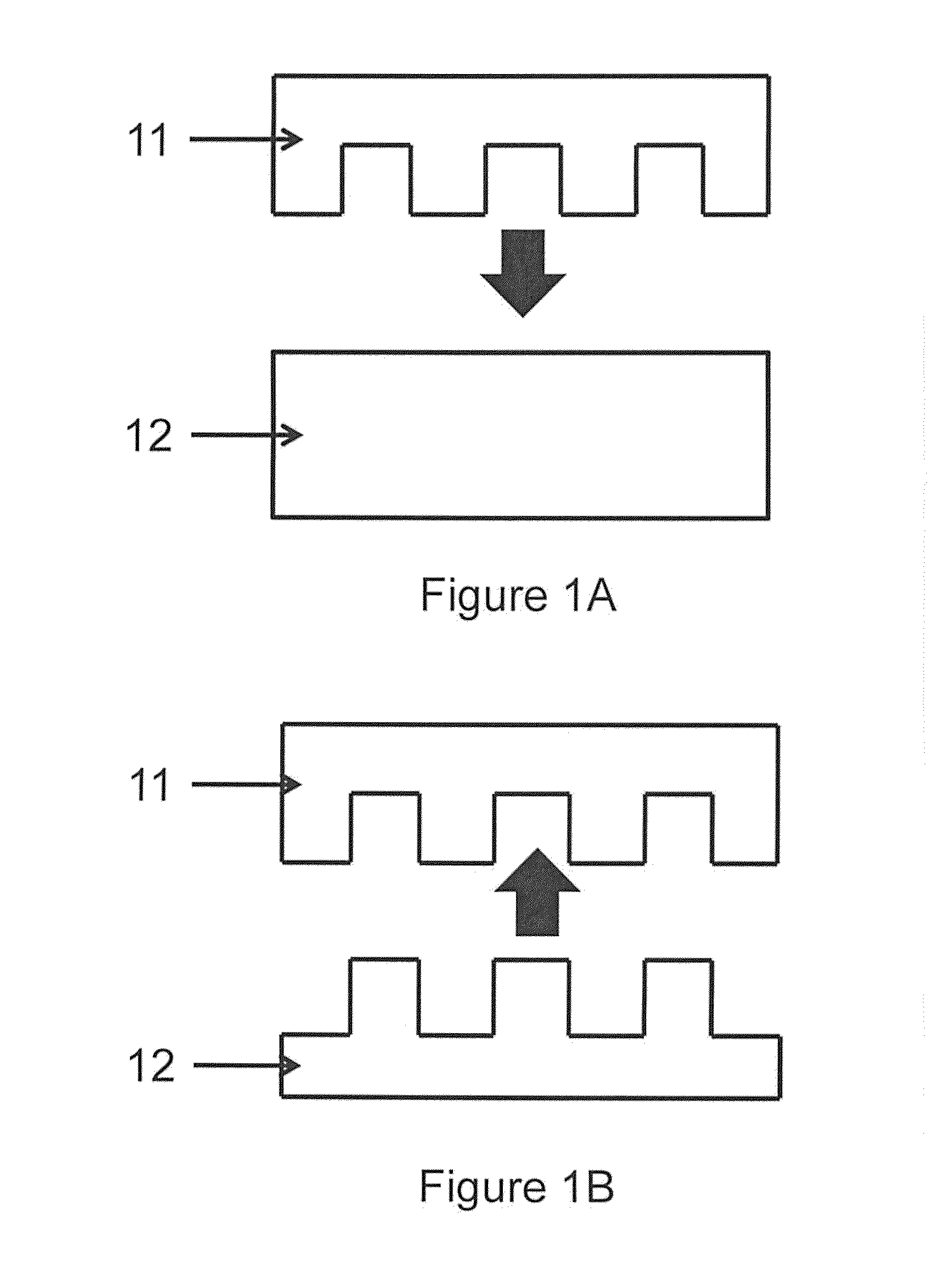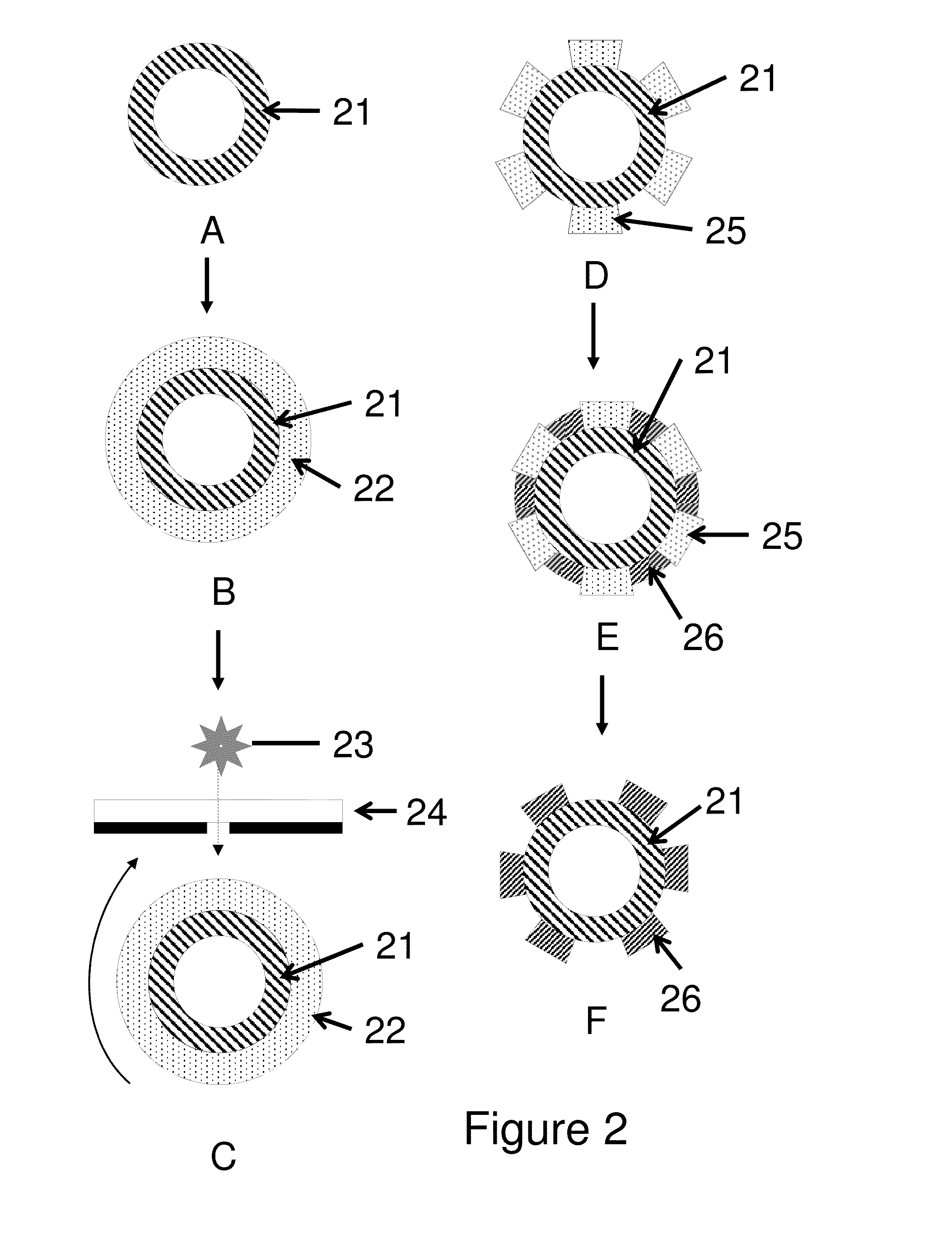Embossing tool and methods of preparation
- Summary
- Abstract
- Description
- Claims
- Application Information
AI Technical Summary
Benefits of technology
Problems solved by technology
Method used
Image
Examples
example 1
[0050]In this example, two embossing tools (i.e., male molds) were prepared. The molds were formed of nickel, according to one of the methods as described above. One of the nickel molds formed was further electroplated with a cyanide-based gold plating electrolyte operated at temperature of 50° C. and pH 5, to achieve a gold coating having a thickness of 0.5 micron.
[0051]For testing of the two embossing molds, a water-based polymer layer fluid and an embossing composition were prepared. The polymer layer fluid was prepared according to U.S. Pat. No. 7,880,958, and it had polyvinyl alcohol as a major component. The embossing composition was prepared according to U.S. Pat. No. 7,470,386, and it had multi-functional acrylate as a major component.
[0052]The polymer fluid was first coated on a PET (polyethylene terephthalate) substrate using a #3 Meyer drawdown bar. The dried polymer layer had a thickness of 0.5 micron.
[0053]The embossing composition was diluted with MEK and then coated o...
example 2
[0056]In this example, several embossing tools (i.e., male molds) were prepared. The molds were formed of nickel, according to one of the methods as described above. One of the nickel molds formed was further electroplated with 0.5 micron of gold with the same electrolyte bath as that used in Example 1.
[0057]For silane treatment, polydimethylsiloxane (Gelest, Inc.) was added into 95% n-propyl alcohol-5% DI water solution which was prior adjusted to pH 4.5 with acetic acid. Polydimethylsiloxane solutions of concentrations of 0.25%, 1% and 2 wt %, respectively, were prepared. Nickel molds were immersed into the silane solutions for 10 min and then baked at 100° C. overnight to achieve a silane coating on the surface of microstructure.
[0058]The embossing testing materials and conditions were the same as those used in Example 1. With the gold plated nickel mold, all of the cured embossing material was completely separated from the gold metal surface. However, more than about 50% of the ...
PUM
| Property | Measurement | Unit |
|---|---|---|
| Fraction | aaaaa | aaaaa |
| Fraction | aaaaa | aaaaa |
| Fraction | aaaaa | aaaaa |
Abstract
Description
Claims
Application Information
 Login to View More
Login to View More - R&D Engineer
- R&D Manager
- IP Professional
- Industry Leading Data Capabilities
- Powerful AI technology
- Patent DNA Extraction
Browse by: Latest US Patents, China's latest patents, Technical Efficacy Thesaurus, Application Domain, Technology Topic, Popular Technical Reports.
© 2024 PatSnap. All rights reserved.Legal|Privacy policy|Modern Slavery Act Transparency Statement|Sitemap|About US| Contact US: help@patsnap.com










